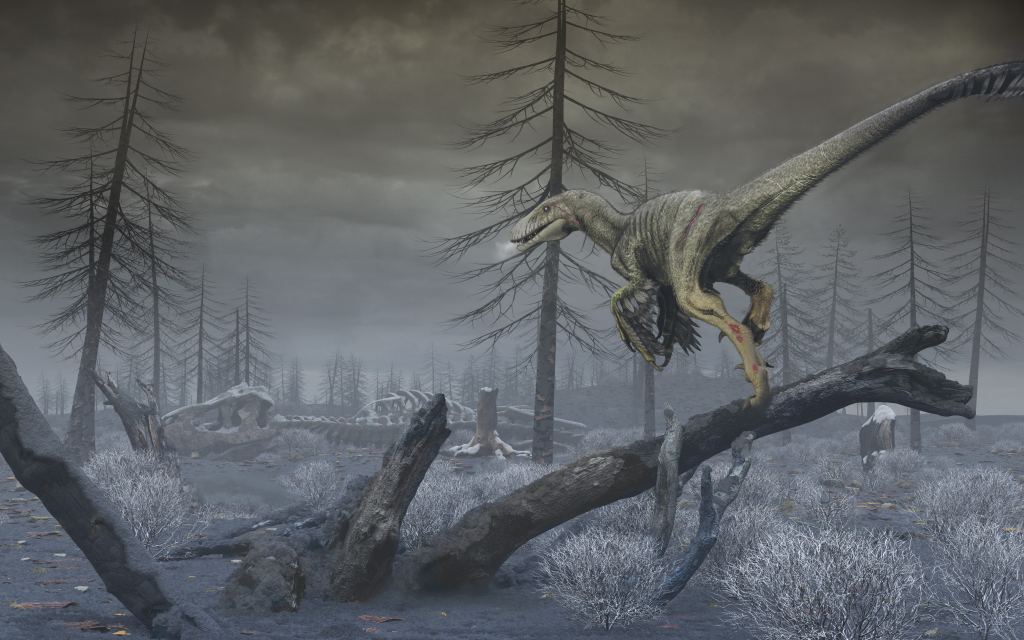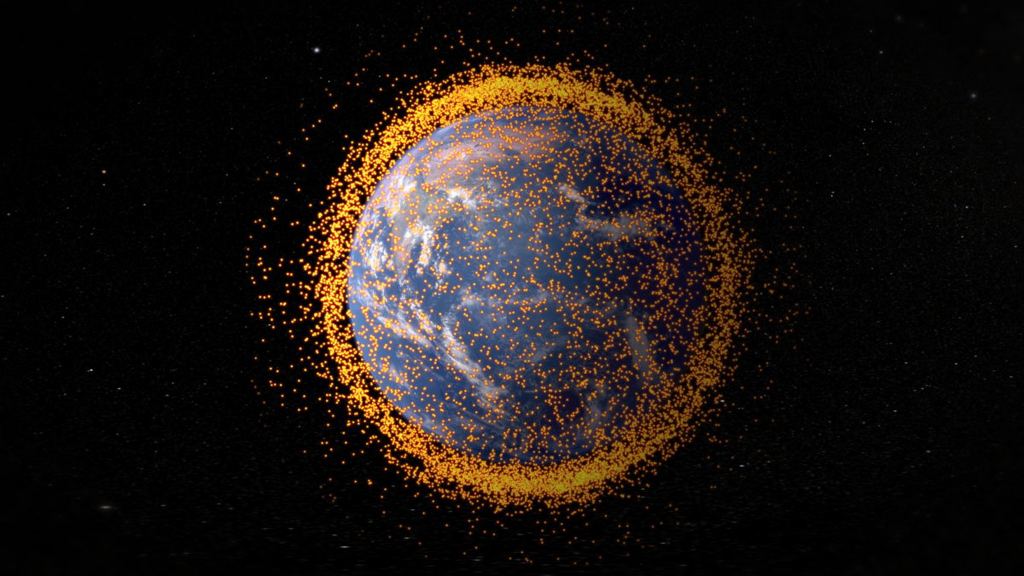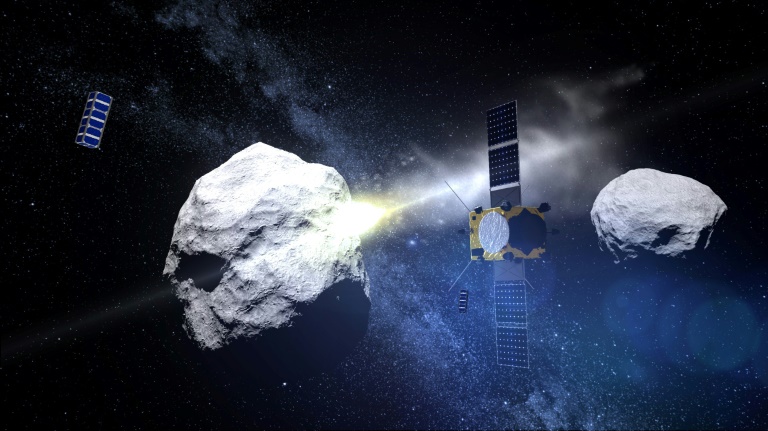While preparing for the threat of an asteroid strike might seem like a hypothetical exercise, it’s really not. The Solar System has calmed down a lot from earlier times when impacts were more frequent. But it is only a matter of time before an asteroid heads straight for Earth. The probability of an impact is not zero.
Equally as difficult as determining when one will come for us is the task of getting humanity to cooperate and prepare for it.
Here’s an incontrovertible fact that thoughts and prayers can’t brush aside: even a modest, 500-meter-diameter asteroid can deliver a powerful blow to Earth and can deliver more than 10 gigatons of energy.
If it struck land, this impact would excavate a crater 9 km across and 0.7 km deep. It could produce 4 km3 of ejecta. The ejecta would flash-heat and be propelled up into the atmosphere, only to rain down and start firestorms. If the asteroid strikes the ocean, then massive tsunamis become a powerful threat.
Either way, the course of human civilization would be altered forever, which is a polite way of saying we’d be screwed. It all comes down to the size of the impactor, and there are many asteroids larger than 500 meters. (To be fair, there are also many that are much smaller.) Whoever survived the impact of a large enough asteroid would likely be thrust into a struggle for survival that rivalled the struggle our ancient ancestors faced.
 The most well-known impact event is the Chicxulub impact that ended the dinosaurs’ reign. This paleoart reconstruction depicts North Dakota in the first months following the Chicxulub impact event 66 million years ago, showing a dark, dusty, and cold world in which the last non-avian dinosaurs, illustrated with a Dakotaraptor steini, were on the edge of extinction. Artwork by Mark A. Garlick.
The most well-known impact event is the Chicxulub impact that ended the dinosaurs’ reign. This paleoart reconstruction depicts North Dakota in the first months following the Chicxulub impact event 66 million years ago, showing a dark, dusty, and cold world in which the last non-avian dinosaurs, illustrated with a Dakotaraptor steini, were on the edge of extinction. Artwork by Mark A. Garlick.None of this is news to people who study asteroids, catalogue the threatening ones, and try to develop ways of not only predicting an impact but also eliminating the threat. Some of those same people—both scientists and politicians—held the Planetary Defence Conference 2023 to examine all the issues surrounding an asteroid strike.
Now a group of researchers have done an in-depth analysis of the conference and looked in more detail at our response. Their results are in a paper in the journal Acta Astronautica. It’s titled “Diplomatic, geopolitical and economic consequences of an impending asteroid threat.” The lead author is Laura Jamschon Mac Garry, a diplomat who is also a professor at the University of Belgrano and the University del Salvador in Buenos Aires, Argentina.
In their analysis, the authors consider things beyond the scientific and technological response. They also consider the legal international framework, the practice of States in multilateral fora and the opinion of scholars.
 When humanity faces a problem, we usually waste time posturing and arguing before getting down to actual solutions. Think space junk and climate change. This illustration shows the cloud of space debris that currently surrounds the Earth, a problem still waiting for a coordinated solution. Credit: NASA’s Goddard Space Flight Center/JSC
When humanity faces a problem, we usually waste time posturing and arguing before getting down to actual solutions. Think space junk and climate change. This illustration shows the cloud of space debris that currently surrounds the Earth, a problem still waiting for a coordinated solution. Credit: NASA’s Goddard Space Flight Center/JSCFirst off, there’s nothing panicky about their approach. “An asteroid impact with Earth is a very low probability event. Yet, if it were to happen, the consequences could be devastating,” the report states. We all know that. But unlike other natural disasters, we can see an asteroid coming, and we can prepare for it. That puts potential impacts in a separate category from things like Earthquakes or volcanic eruptions.
The Conference’s premise is pretty straightforward: a 500-meter diameter asteroid is heading for Earth. It’s a newly detected near-Earth asteroid found in January. Because of the asteroid’s orbit, it was difficult to detect. The PDC deemed it a Potentially Hazardous Asteroid (PHA) and gave it the name 2023 PDC.
As follow-up observations continued, attendees learned that the odds of 2023 PDC striking Earth grew. Eventually, they determined that the asteroid would strike Earth in October 2036, giving humanity 12.5 years of lead time.
That much lead time is critical. It gives humanity time to study the asteroid, determine its composition, and even send a spacecraft to study it. That all sounds good. But there’s a dark side to all that lead time.
“On the other hand, there was also a disadvantage associated with the extensive lead time,” the authors write.
Once we knew where it would strike, chaos would reign in that region. Where would everyone go? Who would take them in? Banks would fail, and the economic system would crash. Industry would collapse, and so might agriculture and food production. People would try to flee, and law and order could break down. In short, it would be a time of unpredictability and chaos. There could be war, cults, fascist dictators, and who knows what other manifestations of humanity’s primitive animal side. Maybe a segment of the population would be blamed as scapegoats and rounded up into camps. All of these things have happened multiple times in humanity’s history without the doomsday threat of an asteroid impact. This is not science fiction.
But every time chaos and disorder stalk humanity, there are those who try to prevent the worst from happening. That’s certainly true when it comes to an asteroid strike.
 There are always people willing to work hard to avert disaster. Image Credit: NASA PDCO
There are always people willing to work hard to avert disaster. Image Credit: NASA PDCO2011 was an important year in asteroid impact preparedness. The United Nations Committee on the Peaceful Uses of Outer Space (COPUOS) established the Action Team on Near-Earth Objects. Governments around the world became involved in developing an international response to an impending asteroid strike. Over the years, more committees were created, and plans were developed to both detect asteroids and hopefully deflect one when necessary.
But all of this was mostly a scientific and technical response. Universe Today readers are likely familiar with the threat of asteroid impacts, the efforts to find all of the potentially dangerous asteroids, and missions like NASA’s DART.
 This computer-generated handout image released by the European Space Agency shows the impact of the DART (Double Asteroid Redirection Test) projectile on the binary asteroid system (65803) Didymos. Credit: ESA/AFP
This computer-generated handout image released by the European Space Agency shows the impact of the DART (Double Asteroid Redirection Test) projectile on the binary asteroid system (65803) Didymos. Credit: ESA/AFPBut this new analysis digs into the societal aspect of an imminent strike beyond detecting and deflecting. Here are some of the questions the study points out that need to be addressed in advance:
If evacuations are required, how will it be organized? Will it be the most vulnerable who get priority? The most productive? How will societal institutions react? Will universities, social media, religions, and others react with catastrophic thinking or with awareness-raising? Is there a responsibility to welcome other citizens in case of disaster (Internal Displacement vs. Cross-Border Displacement)? Who will pay? How and when? If we need to use an atomic warhead to destroy an impactor, how will that be organized? Will there be mistrust?This isn’t a complete list, but it indicates the kind of confounding complexity we’ll be staring down if an asteroid approaches Earth.
Here are some others:
What role will developing countries play versus the role space-faring nations will play? Will geopolitical rivals strive to gain an advantage? If we have 12.5 years of lead time, how will democracies based on four-year governing terms prepare?The authors believe that the primary issue concerns the use of a nuclear explosive device (NED.) “Because the five permanent members of the Security Council, any one of whom can veto the use of an NED in space, are nuclear powers, it would be necessary to engage in geopolitical and economic, possibly even cultural and religious, discussions,” they write.
This isn’t a fun topic, but it does arouse a sense of duty in some. Ultimately, humanity will likely rise or fall together here on Earth. In a sense, an asteroid impact is the ultimate test for our species. Climate change is a slow-moving threat entirely of our own making.
But asteroids are different. Asteroid strikes are entirely natural, and so are extinctions.
If we want to survive the former and avoid the latter, we’ll need to prepare as much as we can. Preparations have already begun, but this paper points out how to continue with our preparedness in realistic ways.
It’s worth a read.

